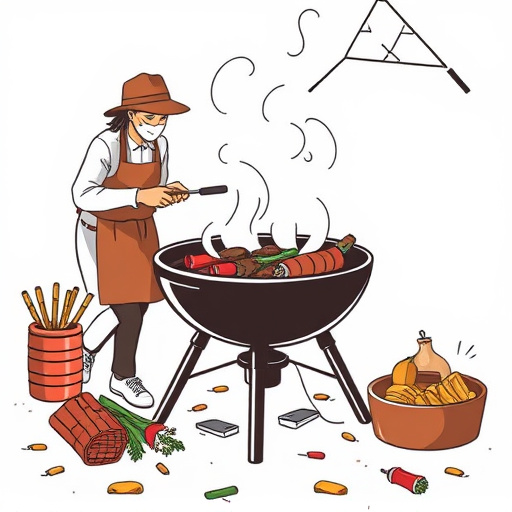Selecting the perfect BBQ beef short ribs involves choosing meaty, well-marbled cuts with a good fat layer, storing them refrigerated or frozen, and ensuring they remain deep red without discoloration. Enhance flavor with dry brining, and choose between slow cookers or smokers for preparation. Cook at 250°F (120°C) for 3-4 hours, checking for tenderness after 2.5 hours. Serve with simple sides like mashed potatoes, salads, or steamed vegetables. Present the ribs on creamy mashed potatoes or a stylish platter and store leftovers in airtight containers for up to 4 days.
Discover the ultimate American classic—beef short ribs, a hearty dish perfect for any occasion. This guide takes you on a journey through every step of crafting the perfect BBQ beef short ribs recipe. From selecting top-quality cuts to choosing the ideal cooking method and saucy accompaniments, we’ll show you how to create tender, juicy ribs that will impress. Learn tips for proper brining, time management, and side dishes to elevate your BBQ beef short ribs experience.
- Choosing the Perfect Beef Short Ribs: Tips for Quality
- The Art of Dry Brining: Enhancing Flavor Before Cooking
- Classic BBQ Sauces: A Range of Options for Your Ribs
- Slow Cooker or Smoker: Which Method is Best?
- Mastering the Cooking Time: Ensuring Tender and Juicy Ribs
- Simple Sides to Complete Your Meal
- Presentation Matters: Serving Suggestions for a Tasty Platter
- Storing and Reheating Leftovers: Tips for Future Enjoyment
Choosing the Perfect Beef Short Ribs: Tips for Quality
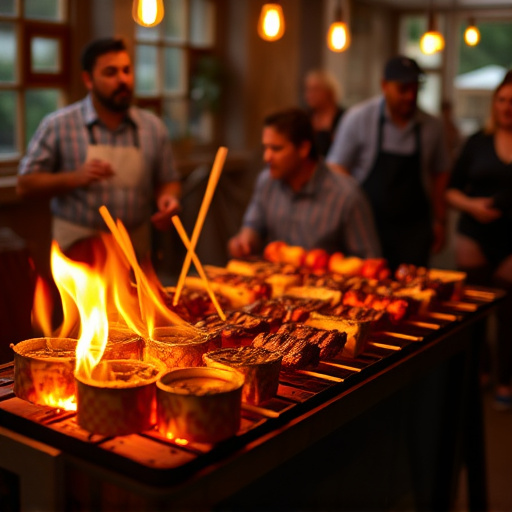
When seeking out the perfect beef short ribs for your BBQ masterpiece, several factors come into play. Look for meaty, well-marbled ribs with a good layer of fat—this ensures they’ll stay tender and juicy during slow cooking. Choose cuts that are about 3/4 to 1 inch thick, which is ideal for even cooking and maximum flavor absorption. The best options are typically “bone-in” short ribs, as the bone adds extra flavor, but boneless ribs can also work well if you prefer a cleaner presentation.
Consider source and quality; grass-fed, naturally raised beef short ribs often offer superior taste and marbling. Check for freshness—top-quality ribs should be deep red in color, with no signs of discoloration or spoilage. Proper storage is key to maintaining quality; keep them refrigerated until ready to cook, and consider freezing for long-term preservation, which can actually enhance flavor.
The Art of Dry Brining: Enhancing Flavor Before Cooking
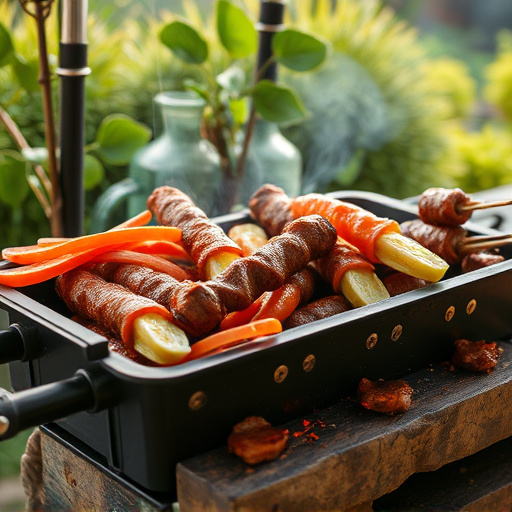
The art of dry brining is a technique that takes your classic American dish, BBQ beef short ribs recipe, to the next level. It’s an age-old method used to enhance flavor and tenderness before cooking. By curing the meat with salt and spices, you draw out its natural juices and create a rich, complex taste profile. This process is simple yet powerful—just massage a generous coating of coarse salt (and your choice of herbs and spices) into the ribs, seal them in a container, and let them sit for a few days in the refrigerator.
During this time, the salt acts as a flavor enhancer, breaking down some of the muscle fibers and allowing the juices to redistribute throughout the meat. The result? Tender, succulent beef short ribs that practically melt in your mouth when cooked. This technique is especially beneficial for dishes that benefit from slow, low-and-slow cooking methods, like BBQ ribs, as it ensures a moist and flavorful end product.
Classic BBQ Sauces: A Range of Options for Your Ribs
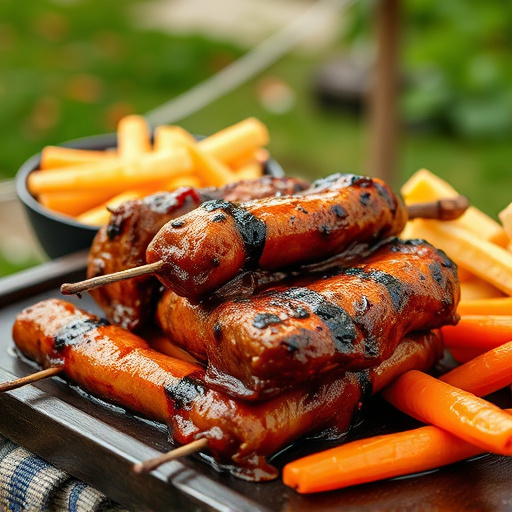
When it comes to classic American dishes featuring beef short ribs, the variety of BBQ sauces available is as diverse as the regions themselves. A BBQ beef short rib recipe isn’t complete without considering the right sauce that complements the tender, fall-off-the-bone meat. Kansas City-style sauces tend to be sweet with a touch of vinegar, perfect for balancing the rich ribs. Texas-inspired sauces lean into smoky flavors and chili powders, adding a kick to each bite. The East Coast offers a sweeter take with tomato-based sauces thickened with brown sugar or molasses.
Experimenting with these different BBQ sauce options allows you to tailor your beef short rib dish to your personal preference. Whether you’re a fan of sweet, smoky, or tangy flavors, there’s a perfect BBQ sauce out there for every rib lover.
Slow Cooker or Smoker: Which Method is Best?
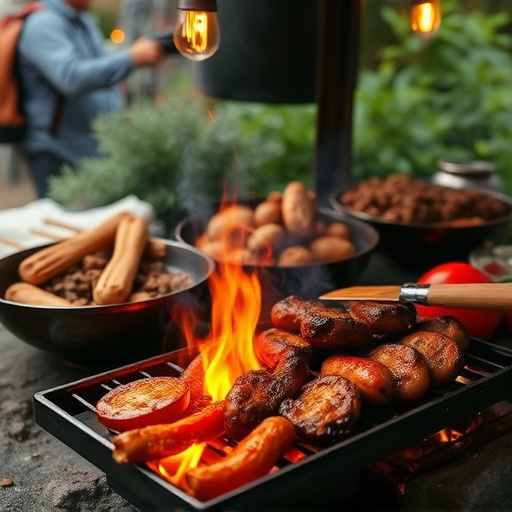
When it comes to preparing mouthwatering BBQ beef short ribs recipes, the choice between a slow cooker and a smoker is a hotly debated topic among culinary enthusiasts. Both methods have their unique advantages, catering to different preferences and cooking styles. The slow cooker offers convenience, allowing you to set it and forget it for several hours, resulting in tender, flavorful ribs. This approach is ideal for busy individuals or those new to smoking who prefer hands-off cooking.
On the other hand, smoking beef short ribs in a traditional smoker bestows a distinct, smoky flavor that is beloved by many. The process takes longer, but it allows for precise temperature control, ensuring the ribs cook evenly and remain juicy. Smokers also provide an opportunity to showcase your culinary skills and experiment with various woods and seasonings, creating a truly artisanal BBQ beef short ribs recipe.
Mastering the Cooking Time: Ensuring Tender and Juicy Ribs
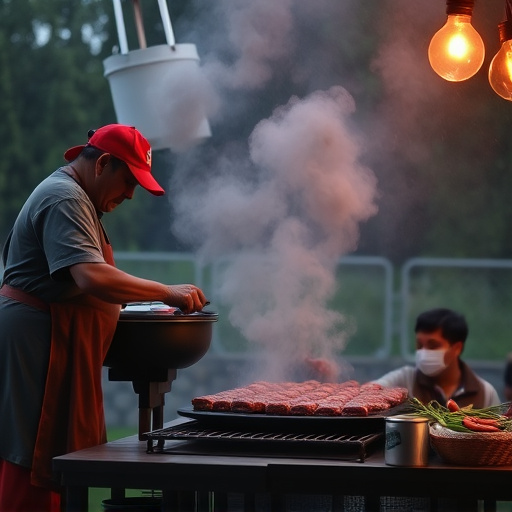
Mastering the cooking time is key to achieving perfectly tender and juicy BBQ beef short ribs, a classic American dish that’s perfect for any gathering. The slow-roasting process allows the collagen in the ribs to break down, resulting in a melt-in-your-mouth texture. For optimal results, aim for 3-4 hours of low and slow cooking at temperatures around 250°F (120°C). This magic happens as the ribs gently simmer, allowing flavors from the BBQ sauce to penetrate deep into the meat.
A good rule of thumb is to check the ribs after about 2.5 hours. They should be tender enough to easily pull apart with a fork. If they’re not quite there yet, continue cooking in low heat until they reach the desired tenderness. This meticulous approach ensures that your BBQ beef short ribs are not only delicious but also satisfyingly juicy, making them the star of any BBQ feast or weeknight dinner.
Simple Sides to Complete Your Meal
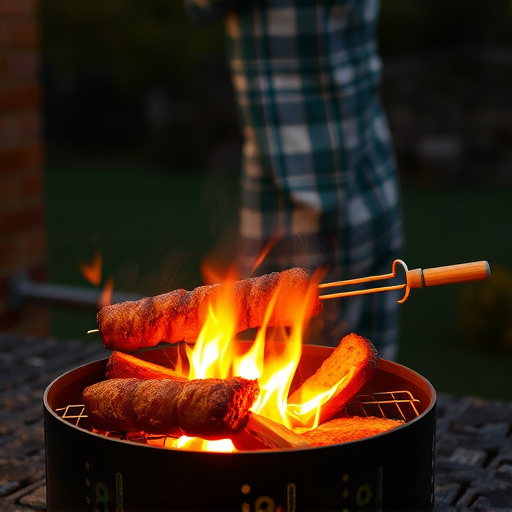
When serving up a classic American dish like BBQ beef short ribs, keep your sides simple and complementary. Potatoes, whether mashed or roasted, are always a reliable choice to balance the rich, smoky flavor of the ribs. A fresh salad with crisp greens and a light vinaigrette can add a much-needed crunch and brightness to the plate.
For an even easier option, consider steamed vegetables like broccoli or carrots, or even a simple bowl of rice. These side dishes not only complete your BBQ beef short ribs recipe but also ensure every bite is a harmonious blend of flavors, making for a truly satisfying meal.
Presentation Matters: Serving Suggestions for a Tasty Platter
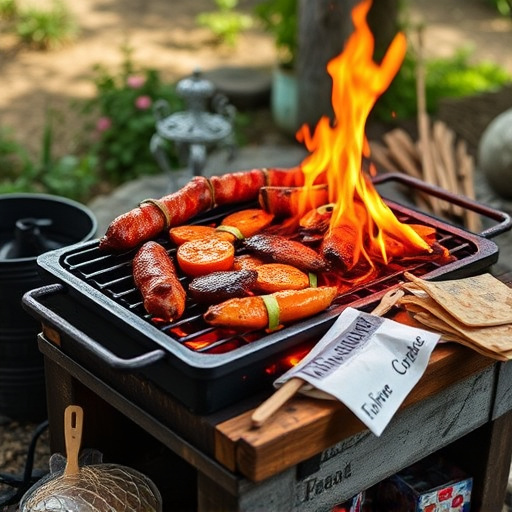
When presenting classic American BBQ beef short ribs, remember that appearance is just as important as taste. A well-plattered dish can elevate the dining experience, ensuring your creation makes a lasting impression. Consider arranging the tender ribs on a bed of creamy mashed potatoes, adding a rich gravy made from the rib juices for extra flavor. Top it off with a sprinkle of fresh herbs like parsley or rosemary to bring color and aroma.
For an even more captivating display, pair the ribs with roasted vegetables such as carrots, peas, and potatoes. This combination not only offers a contrasting texture but also provides a balanced meal. Use a simple wooden board or a stylish serving platter to showcase your BBQ beef short ribs recipe, allowing guests to savor every mouthwatering bite.
Storing and Reheating Leftovers: Tips for Future Enjoyment
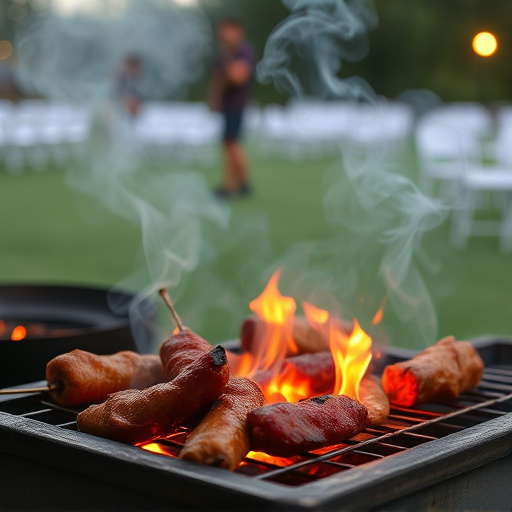
When enjoying a delicious BBQ beef short ribs recipe, it’s natural to want to savor its flavor for days to come. Storing leftovers properly is key to maintaining that mouthwatering taste and texture. Place the leftover ribs in an airtight container or wrap them tightly in foil or plastic wrap before storing them in the refrigerator. Ideally, consume them within 3-4 days for optimal quality.
To reheat, consider a few methods: baking them in the oven at a low temperature to retain moisture, simmering them on the stovetop with some broth, or quick-heating them in a microwave (but be mindful not to overcook). Reheat until warmed through and serve with your favorite sides for another satisfying taste of that classic American dish.
